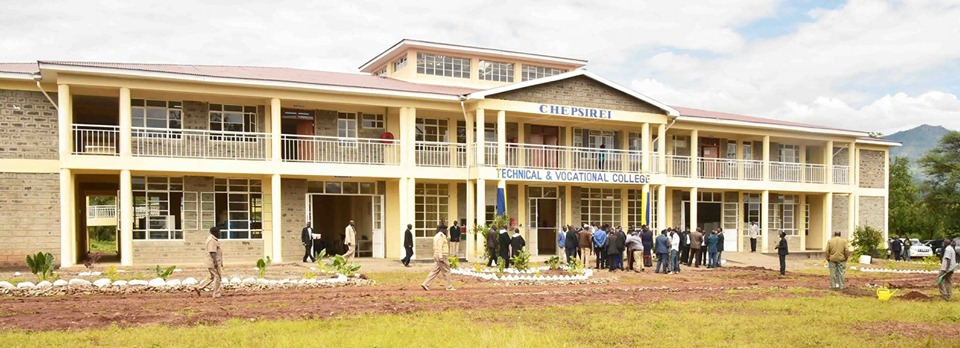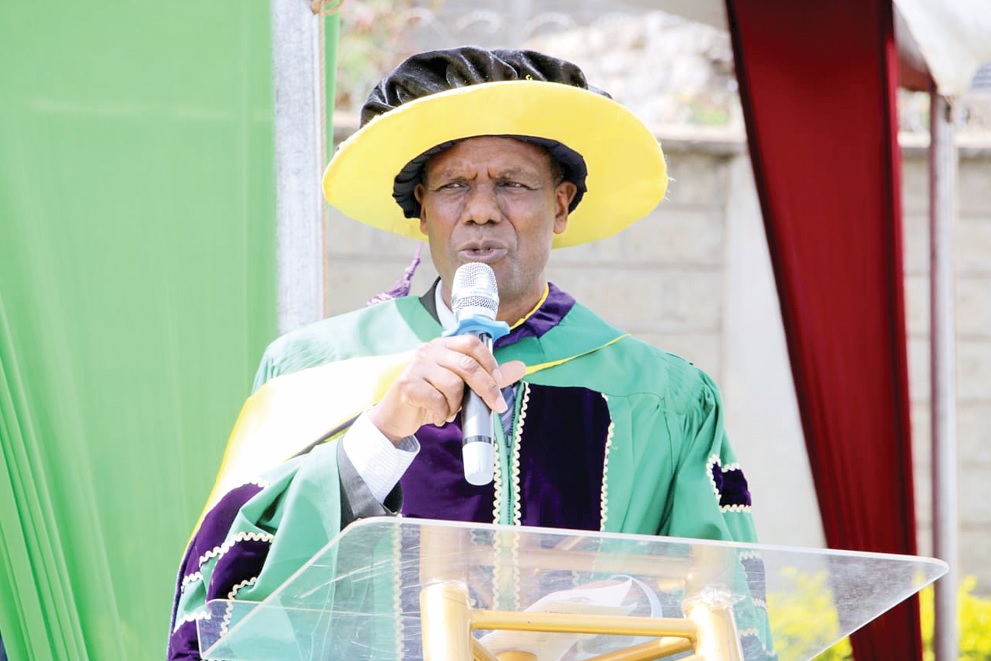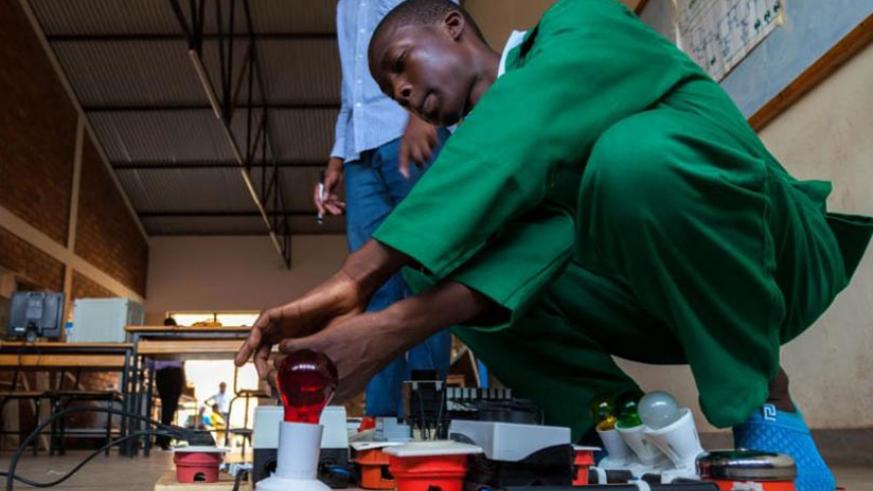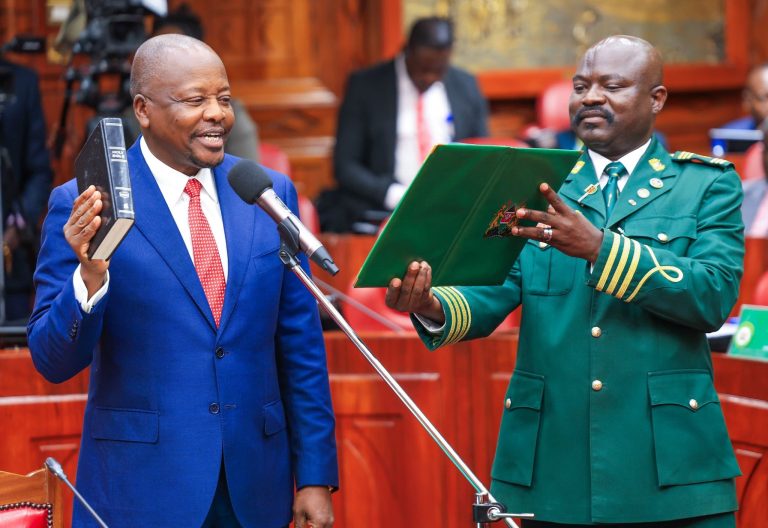Growth of technical colleges boosts employment

Since 2013, the government has instituted reforms to drive up the expansion of Technical and Vocational Education and Training (TVET) institutions and achieve enrolment target of 3.1 million over the next five years
Construction of Technical and Vocational Education and Training (TVET) institutions and the revamping of polytechnics across the country is giving new hope to communities as white-collar jobs become increasingly elusive.
Thanks to the government setting up Technical Training Institutes (TTIs), young people are now finding it easier to acquire the technical skills they need to start own businesses and earn a living. Previously, high school students who failed to join universities and colleges had few options for gaining skills since technical institutes were few and far apart.
Sirisia (Bungoma county), Njoro (Nakuru county), Kiharu (Murang’a county), Navakholo and Ikolomani (both in Kakamega county) are some of the constituencies benefitting or set to gain from TTIs.
In Njoro, Nakuru County, the residents are optimistic that the upcoming Njoro Technical Training Institute, currently under construction at the former Rumwe farm, will change the fortunes for the community.
John Ichigo Kamau, chairman of the Public Management Committee in charge of the Njoro TTI project, says the residents hope the college will help solve joblessness the area has grappled with for years.
“Previously, many of our students who couldn’t join university had nowhere to go. Now we’ll have a place of our own. We’ll no longer need to beg for opportunities for our children to learn,” says Kamau.
He expresses optimism the school, with a capacity of 800 students, will open up business opportunities such as hostels and shops within its neighbourhood. The first intake of students is expected in September 2020.
Njoro CDF has an arrangement with Rift Valley Institute of Business Studies (RVIBS), a private college, where it sponsors 367 students taking various short courses at the institution. “We are sponsoring them at a discounted cost of Sh38,000 per head,” says Joseph Kimani, the Njoro CDF official in charge of youth.
The school offers courses such as electrical engineering, cosmetology, hospitality, and fashion and design. “Once the TTI is complete, these students will transfer to the new school. We have also sponsored 450 students taking driving lessons at High View Driving School near Store Mbili, Njoro,” says Kimani.
He estimates that only about 13 per cent of high school students in the constituency make it to university, including government and self-sponsored students. This leaves the rest to scramble for the few post-secondary education opportunities available.
Chebuyusi TTI now ready
With the other nearest TTI located in Nakuru town, Kimani expects the Njoro TTI to attract students from the surrounding areas such as Mau Narok, Mauche, Lari and Elburgon.
The Sh100 million project began in May and is expected to be finished by June next year. Some Sh90 million came from the national government while the Njoro Constituency Development Fund (CDF) contributed Sh10 million.
Phase One of the project, which is 70 per cent complete, will be a one-storey block housing classrooms, workshops, laboratories and related rooms. “However, the foundation is good enough to hold six floors,” says Kamau.
The institute sits on a five-acre piece of land acquired by the Njoro CDF in 2016. However, the plot didn’t have a title deed until 2018.
Anna Wambui Mbugua, 35, a fashion and design student and a mother of two, is happy to be gaining skills at the privately-owned RVIBS College as she awaits to transfer to the public institute.
“When I came here, I didn’t know how to sew but now I do. Being here has changed my life in that I no longer need to spend money on clothes; I make my own,” says Wambui.
Jackline Musimbi, a cosmetology student, who completed Form Four in 2004 but couldn’t further her education due to financial constraints says: “I am happy to be here gaining skills. I also hope to start my own business soon.”
Dorothy Abuga, a fashion and design student says joining a technical college has saved her from bowing to unnecessary societal pressure. “Rather than just staying at home, I opted to come here and learn how to design clothes. Perhaps, I would be married or doing other unconstructive things,” she muses.
In Sirisia, Bungoma County, a new technical training institute with a capacity for 1,200 students is nearing completion. “I did not want helpless youth around here, so I lobbied for a TTI. Before then, the nearest TTI was at Kisiwa in Kapchai,” says Sirisia MP, John Waluke.
The institute, which sits on 10 acres, has already received Sh100 million from the national government to facilitate its completion. “Construction began last year, with projections to accept its first batch of students early next year,” says Moses Wakhisi, a Sirisia CDF official.
Caleb Wanjala, a 26-year-old electrical technician, is looking forward to the opening of the institution so he can complete an electricity course he abandoned back in 2016. He shares his dream with another village mate, Timothy Were. “I dropped out of Sirisia Youth Polytechnic in 2016 in Grade Three, yet I was supposed to go up to Grade One. I want to go back to class now that the school is nearby,” says Wanjala.
Just like the Njoro TTI, Sirisia will offer technical courses such as carpentry and joinery, masonry, electricity, accounts and book keeping, building and construction.
Chebuyusi TTI in Navakholo Constituency, Kakamega County, is already a step ahead of Njoro and Sirisia. It is complete with ready-to-use classrooms and equipment. Constructed at a cost of Sh59 million, including Sh10 million from CDF, it is the only one in the recently-created constituency.
William Mero, a construction worker at the institute, plans to join the technical college after taking a gap year due to lack of fees. Prior to its construction, students from the area had to seek technical education at Kisiwa TTI in Bungoma or Shamberere TTI in Kakamega North.
Chebuyusi TTI is built on a piece of land donated by Quakers Church and can accommodate about 1,000 students. The local CDF office has promised to offer bursaries to 50 students. “We don’t want to offer merely certificates; we want to offer courses that will help our children in future,” said Navakholo CDF chairman, Kennedy Ngao Barasa.
CDF boost
Meanwhile, in a bid to ensure 100 per cent transition of students from primary to secondary school, the government through the CDF, has made efforts to expand existing schools as well as support the establishment of new ones.
In Murang’a, for instance, Technology Primary School population has now tripled to 908 pupils taught by 22 teachers, up from 342 pupils and five teachers in 2007. Similarly, the Early Childhood Development Education section of the school has 215 children taught by five teachers up from 17 children and two teachers in 2007.
According to head teacher Beatrice Wachira, the expansion was facilitated by the 2009/2010 Economic Stimulus Package. The school received Sh3.5 million to construct eight new classrooms, converting it into a double-stream school.
During the 2017/2018 financial year, the school received another Sh1 million and a further Sh500,000 from Kiharu Constituency CDF for renovations. Increased enrolment has, however, resulted in congestion with a class having an average of 60 pupils as opposed to the recommended 30 to 35. “Pupils used to transfer from here to private schools, but these days it’s the opposite,” says Wachira.
Kiharu CDF Chairman, Peter Manyeki, says the constituency spends about Sh75 million annually on on education, including on its 133 primary schools. Plans are afoot to construct nine more schools.
To increase transition into secondary school the CDF is also supporting the establishment of day schools such as Gitaro Secondary School, in Murang’a. Established in January this year with only 23 students so far, the institute has received Sh1.6 million from Kiharu CDF for construction of classrooms and purchase of furniture.
Since 2013, the government has instituted reforms to drive up the growth of TVET institutions and achieve enrolment target of 3.1 million over the next five years. In the 2018/19 budget, TVET was allocated Sh16 billion— about three per cent of the total budget for the Education Ministry.













